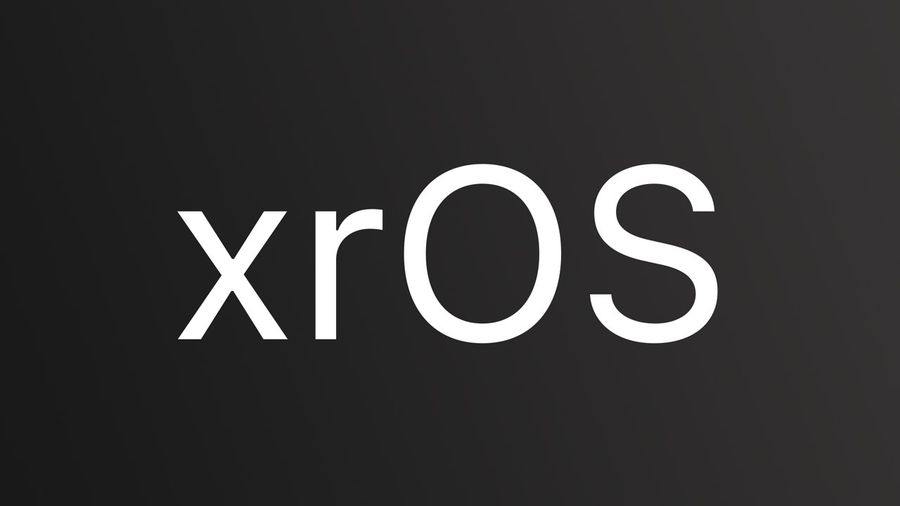Introducing xrOS: Apple's Next-Generation Operating System for the VR Headset

Hey everyone, today we're diving into the exciting world of Apple's upcoming VR Headset and its operating system, xrOS. Just like all of Apple's incredible hardware products, this VR Headset needs a powerful operating system to deliver an exceptional user experience. While the official feature set is still shrouded in mystery, there are some intriguing details worth exploring.
First things first, the big reveal of xrOS is expected to happen during the Worldwide Developers Conference (WWDC). It's an eagerly awaited moment for tech enthusiasts and Apple fans alike.
One standout feature of xrOS is its capability to seamlessly run iPad apps with minimal developer input. This compatibility is a game-changer, as it opens up a wide range of possibilities for users to explore their favorite apps in the immersive VR environment.
Additionally, xrOS has an exciting feature known as passthrough mode. This innovative technology takes VR a step further by seamlessly transitioning from a virtual reality experience to an augmented reality one. It's like merging two worlds together, creating an even more immersive and interactive environment for users.
Another noteworthy point is that xrOS is believed to be a precursor to the operating system for Apple's highly anticipated AR glasses, often referred to as Apple Glass. The launch of xrOS alongside the rumored VR headset signifies Apple's commitment to advancing both virtual and augmented reality technologies.
Now, let's talk about the interface of xrOS. Describing a VR system is always a challenge since the true experience can only be felt when you put on the headset. This, coupled with Apple's characteristic secrecy, explains why there is a scarcity of leaked information about xrOS.
However, based on what we know about VR headsets and Apple's design philosophy, we can speculate that the xrOS interface will likely incorporate Apple's signature aesthetic and familiar app layouts. The goal is to provide a user-friendly and intuitive interface that feels natural to Apple users.
When it comes to input methods, Apple may offer various options. While traditional controllers could be included, rumors suggest that the headset will also support intuitive hand gestures for interaction. Furthermore, users might have the ability to type on virtual keyboards or see digital representations of physical keyboards within a mixed-reality simulation. Apple might even introduce a virtual "Mac" or a floating display, further blurring the line between the physical and digital worlds.
In terms of controlling the VR experience, voice commands might be part of the equation. There were reports of internal debates within Apple regarding the creation of a new virtual assistant specifically for the headset, but it seems Apple has decided to stick with Siri for now. Accessibility is a key consideration for Apple, so we can expect a range of input methods to be available, including integration with devices like Apple Watch, iPhone, and other Apple products.
Moving on to applications, the success of VR headsets lies in the software and apps that run on them. The XR ecosystem will offer an array of experiences, including gaming, teleconferencing, social events, movie viewing, and productivity tasks, among others.
An interesting aspect of xrOS is its reliance on iPad apps. Many of Apple's existing apps are said to be already running on the headset, and third-party developers won't require significant modifications to make their apps compatible. The apps will appear as floating windows in front of the user, with touch and gesture controls from the iPad translating into the headset's 3D space.
The functionality and user experience of xrOS applications will heavily depend on input methods and Apple's innovative solutions. For instance, how the headset tracks hand movements and determines the position of physical objects will affect how easily users can interact with and manipulate apps in the virtual environment.
Beyond gaming, VR headsets have gained popularity in teleconfer
encing and media consumption. Apple could take these experiences to the next level with a conferencing app leveraging its popular FaceTime platform. Users would find themselves immersed in realistic virtual environments, with highly detailed avatars enhancing the sense of presence. It's possible that one-on-one VR chats would allow users to access more realistic avatars, while the computational demands of creating multiple detailed avatars might limit their usage in group settings.
The term "xr" in xrOS carries more significance than just a catchy name for the operating system. It stands for "extended reality," an umbrella term encompassing various technologies like augmented reality (AR), virtual reality (VR), and mixed reality (MR). Apple's journey into the XR world began with AR applications on iPhone and iPad, leveraging LiDAR technology to anchor virtual objects in the real world. The knowledge gained from developing AR apps for these devices has undoubtedly influenced the creation of the VR headset and xrOS. While the VR experience will be the primary focus initially, rumors suggest that an AR passthrough mode will be available, offering a glimpse into Apple's future wearable AR endeavors and the eventual development of mixed reality.
Looking ahead, Apple envisions a future where the next-generation VR headset, expected to arrive in 2024 or 2025, and the AR glasses, slated for 2026 or later, will both be powered by xrOS. Although initially positioned as the operating system for the new headset, xrOS is poised to become a significant platform driving the future of Apple's product lineup.
So, get ready to immerse yourself in an extraordinary virtual reality experience with Apple's upcoming VR Headset and the groundbreaking xrOS. Stay tuned for more updates as we approach the much-anticipated WWDC announcement. Let the XR revolution begin!
Date: 28-05-2023, 11:06 AM